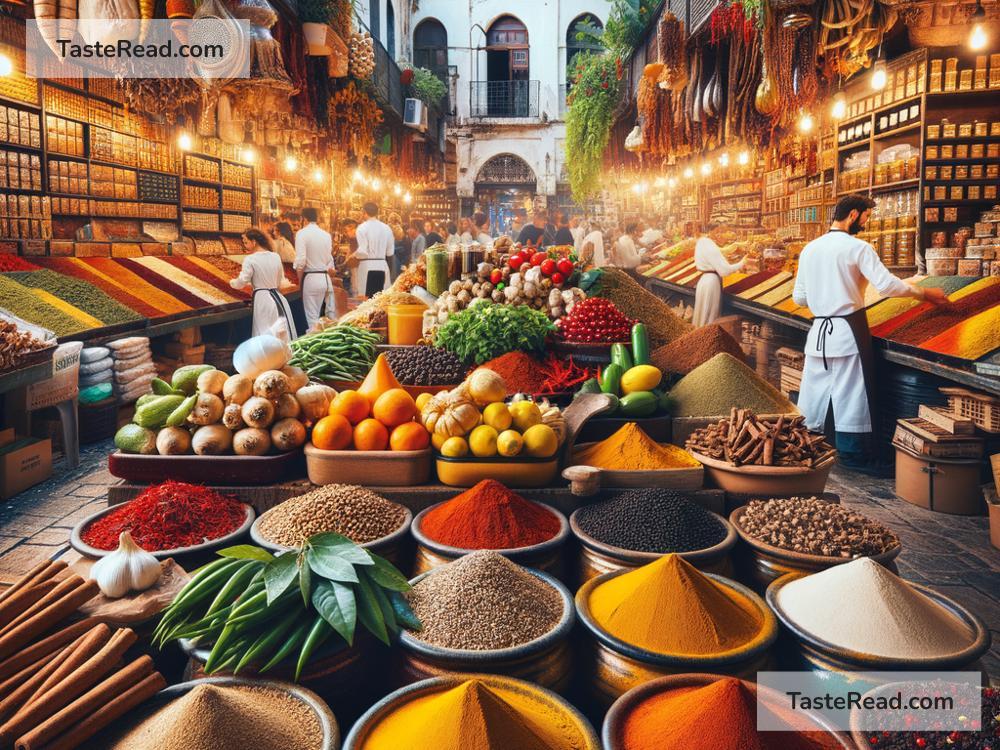The Spice Trade and Its Impact on World Cuisine
Imagine cooking your favorite dishes without adding spices. No cinnamon in cakes, no black pepper on soups, and no chili to give heat to curries. Food would be much less flavorful, right? That’s how important spices are in almost every culture’s cooking. But did you know that centuries ago, spices were as valuable as gold? The spice trade not only shaped the way people eat around the world but also influenced global history. Let’s explore how the spice trade changed world cuisine and brought people, cultures, and flavors together.
What Was the Spice Trade?
The spice trade refers to the buying and selling of spices like cinnamon, cloves, nutmeg, pepper, and ginger across regions and continents. Thousands of years ago, spices were rare and highly prized. Ancient Egyptians used them to flavor food, make medicine, and even preserve dead bodies during mummification. Spices had medicinal, religious, and commercial value, making them incredibly desirable.
Spices often came from distant and exotic locations. For example, nutmeg and cloves grew on the Banda Islands in modern-day Indonesia, while black pepper originated in India. Ginger and cinnamon hailed from southern Asia. Because spices were hard to find and cultivate, they were considered luxury goods. Traders traveled thousands of miles to transport spices to the Middle East, Europe, and beyond.
How Did the Spice Trade Begin?
The spice trade started long before the modern era. Ancient trade routes like the Silk Road connected Asia, the Middle East, and Europe. Merchants from India, China, and Arabia would carry spices to the Mediterranean region, where European traders bought them and transported them farther. By the 15th century, Europeans craved spices even more, especially black pepper, which was called “black gold.”
To meet this demand, European nations such as Portugal, Spain, and later the Dutch and British began exploring new sea routes to reach spice-growing regions directly. Adventurers like Vasco da Gama and Christopher Columbus set sail in search of wealth, glory, and spices. Columbus mistakenly landed in the Americas, but his journey indirectly introduced European cuisines to chili peppers, tomatoes, and potatoes—ingredients that shaped Italian, Spanish, and other cuisines.
Spices and Their Impact on World Cuisine
The spice trade did more than just make merchants rich; it deeply influenced the food cultures of countries around the world. Different spices added unique flavors to cuisines and gave rise to dishes that are iconic today. Let’s look at some examples:
-
India: The Land of Spice Blends
India is known as the “land of spices,” and the spice trade had a huge impact on the country’s culinary heritage. India developed its famous spice blends, such as garam masala and curry powder, which combine multiple spices to create layers of flavor. Dishes like chicken curry or biryani wouldn’t exist without the influence of the spice trade. Spices like turmeric, cumin, coriander, and cardamom are staples in Indian cooking, and they were introduced to traders worldwide. -
Europe: Spices for Royal Feasts
During the Middle Ages, Europe’s upper class used spices to display wealth and status. Spices like saffron and cloves were added to meat dishes and desserts. Nutmeg spiced up puddings and pies. The arrival of spices even inspired new dishes; for instance, gingerbread appeared as a popular dessert. Later, European colonists brought home spices and recipes from the Americas, such as chili peppers, which contributed to the evolution of Spanish and Italian cuisines. -
Middle East: A Fusion of Flavors
The Middle East was an important hub of the spice trade, and its cuisine reflects its multicultural heritage. Dishes like kebabs, falafels, and rice pilaf often feature spices like cinnamon, cardamom, and black pepper. The trade also introduced saffron, a precious spice used in dishes like Persian saffron rice. Middle Eastern cuisine became a melting pot of flavors because of its central role in the spice exchange. -
Southeast Asia: Spicy and Aromatic
Countries like Indonesia, Thailand, and Malaysia are home to tropical spices that shaped their distinct cuisines. Nutmeg and cloves are essential for Indonesian recipes, while Thai cuisine uses chilies, lemongrass, and ginger. Curry dishes in these regions show how global trade influenced their cooking methods. -
Americas: New Ingredients, New Cuisines
While the Americas did not produce many of the traditional spices, they contributed ingredients that forever changed global cuisine. Chili peppers, vanilla, and cacao beans became popular in Europe and Asia. The adoption of chilies in Asian cuisines, for example, transformed dishes like Kung Pao Chicken and Thai Green Curry into spicy favorites.
The Spice Trade Today
Spices are still important in the modern world, but they are no longer as rare and expensive as they once were. With advancements in transportation and farming, spices are grown and distributed more widely today. Many countries now produce spices, making flavors accessible to everyone.
Global cuisine has become more diverse and interconnected thanks to the spice trade. You can eat Indian curry in London, Italian pasta with black pepper in Delhi, or Thai Tom Yum soup in New York. Spices have allowed people to share recipes and cultural traditions across the globe.
Final Thoughts
The spice trade was more than just an exchange of goods; it was an exchange of flavors, ideas, and stories. Without it, world cuisine would lack the richness and creativity we see today. Spices turned cooking into art, enabling chefs everywhere to experiment and innovate. So the next time you sprinkle a little pepper on your dish or enjoy a warm cinnamon roll, remember the adventurous journey that brought those spices to your plate.


